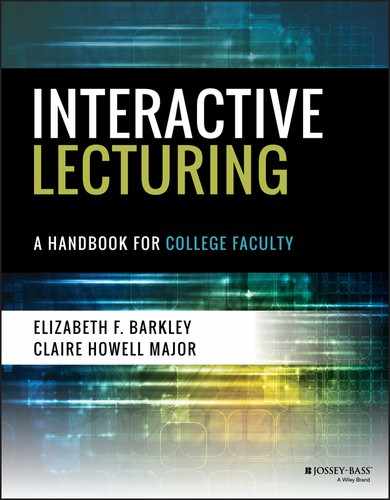CHAPTER 3
Setting Goals
Goal setting involves developing an action plan that can guide you toward achievement of the goal. Setting goals is an important part of teaching effectively because it requires teachers to think through why they are doing what they are doing when they design their course's learning environment. The backwards design movement, popularized in Wiggins and McTighe's (1988) Understanding by Design, makes the case that instructors should identify learning goals as the very first step when planning a course. The authors suggest that teachers start by specifying the knowledge and skills that students should have when they leave the course. After faculty members have determined these learning goals, then they should consider what evidence will help them ensure the goals have been met. Thus it is not until after goals (and assessment) are established that faculty members should begin to make decisions on how to teach content, including choosing whether or not to share knowledge with students through a lecture presentation.
We agree that identifying significant learning goals is a fundamental first step in good teaching, and for this reason we provide detailed guidance on how to do this well in Learning Assessment Techniques: A Handbook for College Faculty (Barkley & Major, 2016). From that book, we have included information on our Learning Goals Inventory (LGI) and included it here in Tip 2: SMART Lecture-Learning Goals. In addition to identifying learning goals, there are other aspects of goal setting that are relevant to crafting good lecture presentations. These elements include articulating the purposes for your presentation, gathering relevant data regarding student characteristics so that you can be more effective in tailoring your presentation to meet learners' needs, and attending to the persona you project so that you can deliver more-focused and credible lecture presentations. Being intentional about elements such as these will help you construct and deliver more-effective presentations and also situate your presentation within the other activities in your interactive lecture session. In this chapter, we have identified Tips that we believe will help you to identify goals for the presentation segment of your interactive lecture. The Tips are summarized in Exhibit 3.1.
References
- Barkley, E. F., & Major, C. H. (2016). Learning assessment techniques: A handbook for college faculty. San Francisco, CA: Jossey-Bass.
- Wiggins, G., & McTighe, J. (1998). Understanding by design. Alexandria, VA: Association for Supervision and Curriculum Development.
